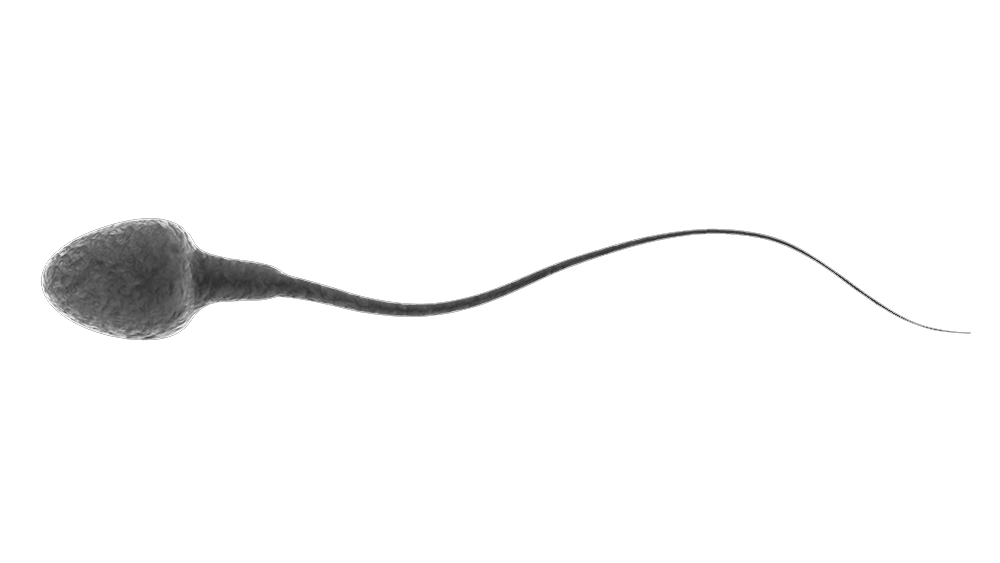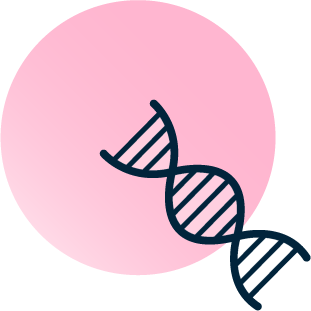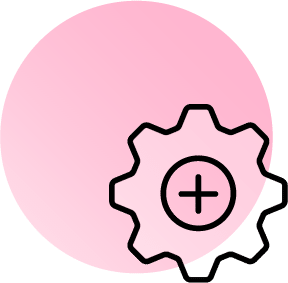Sperm Bank
Patient first: choose quality, safety and expertise



Profile
Thanks to our network of our own centres, we have a wide diversity of phenotypes and different service options. Every month more than 100 new donors join our donation programs.
At Gametia Biobank we believe that the more demanding we are, the greater security we can offer our clinics and patients.
This is the reason why our DONOR SELECTION PROCESS is more demanding than the legal requirements in force in the respective countries headquarters are located and within the legislation of the European Union.
We continuously expand and improve our donor screening process following the recommendations of scientific societies such as ESHRE, ASRM, SEF, SIRU, ASEBIR, SIERR and other scientific societies of international relevance. We are active participants in many of these societies.

01
Selection process
1.1 – MEDICAL HISTORY
A personal and family medical history is carried out going back up to two generations, in order to assess and rule out hereditary diseases, according to Spanish Law 9/2014 and RD 412/1996.
An in-person assessment of the psychological history of the donor and his or her environment is included, following the recommendations of the Spanish Fertility Society (SEF).
1.2 – PARAMETERS OFE SPERM SAMPLES
- At Gametia Biobank, only semen donor candidates with values significantly above those considered normal by the World Health Organization (WHO) are admitted.Sperm concentration: ≥ 80 million spermatozoa/ml
- Progressive sperm motility: ≥ 50%
- Sperm morphology: ≥ 4%
1.3 – BLOOD GROUP, RH AND GENERAL BLODD TESTS
- Blood group
- Factor Rh
- Hemogram
- Prothrombin Activity
- TTPA
- Glucose
- Creatinine
- Total cholesterol
- HDL cholesterol
- Triglycerides
- Transaminases (GOT, GPT)
1.4 – INFECTIOUS AND SEXUALLY TRANSMITTED DISEASES
SEROLOGIES
Serological studies for infectious diseases are carried out on all donors, both in the initial phase and after six months of quarantine (frozen sperm), to rule out false negatives if they are in a window serology period.
* If Anti CMV IgM is positive, a PCR study is performed
URINE PCR
Chlamydia trachomatis and Neiseria gonorreae are tested using PCR on urine samples.
MICROBIOLOGICAL CULTURE
Microbiological culture is performed in two ways:
- Discard pathogenic microorganisms that may cause pathology in the recipient woman.
- Protect cultures made in IVF techniques from contamination that endangers the viability of the technique.
For this reason, donors and/or samples that do not meet the following criteria are discarded:
- Absence of growth of pathogenic germs.
- Regional flora growth < 1000 CFU/mL.
1.5 – CYTOGENETIC STUDIES AND MOLECUAR GENETICS
Only donors with a normal karyotype are accepted. Since structural variants (dup, del, inv) of the karyotype, even those not associated with pathological phenotypes, have been associated with worse results in reproductive processes, they are also not admitted to our donation programs.
Our donors are evaluated with the Next Carrier Test, a Next Generation Sequencing (NGS) carrier study panel to detect autosomal recessive genetic mutations.
In all cases, mutations in the genes responsible for autosomal recessive diseases recommended by the Spanish Fertility Society are studied, which are the most prevalent in the Western European population.
The aim is to significantly reduce the risk of having offspring with one of the most prevalent diseases in the Mediterranean region, including the recommendations of the Spanish Fertility Society, in shipments without genetic matching.
Illness
Gene
Cystic fibrosis
CFTR
Spinal muscular atrophy
SMN1
Autosomal recessive deafness Type 1A
GJB2
HBA1/HBA2
Beta thalassemia
HBB
Familial Mediterranean Fever
MEFV
Phenylalanine hydroxylase deficiency
PAH
Pompe disease
GAA
Alport Syndrome
COL4A4
Smith-Lemli-Opitz syndrome
DHCR7
Tay Sachs disease
HEXA
Glucose-6-phosphate dehydrogenase deficiency
G6PD
Genetic matching is a tool that allows us to compare the genetic information of the donor with that of the female recipient partner, with the aim of avoiding the expression of unknown genetic diseases in the offspring. This is achieved by studying 2128 genes related to autosomal recessive diseases.
This analysis is carried out using the latest technology in genetic diagnosis, which is Next Generation Sequencing (NGS).
Among the 2128 genes studied, variants of high prevalence in the Mediterranean area are included.
The results of our donors are compared with the genetic study carried out on the female recipient partner, so that we select a suitable donor, so that the donor and the woman do not share mutations that could trigger a disease in the offspring.
The ideal genetic matching is one that offers the maximum possibility of reducing the reproductive risk for the diseases included in the carrier study. This is achieved when both individuals providing the gametes have performed the same carrier test.
Many centers carry out carrier tests that are different from the one we carry out on our bank’s donors. In these cases, the assignment will be carried out in such a way that the donor must have a report with a negative result (not a carrier of pathogenic variants) in the genes in which the recipient patient has been found to be a carrier, as indicated in the report provided by the requesting center.
Therefore, the genes considered for matching will be those that have pathogenic and likely pathogenic variations in the test provided by the requesting center.
(The genetic matching protocol does not eliminate the risk in the offspring of suffering from or being carriers of recessive diseases, even if it is one of the diseases studied. Its objective is to significantly reduce the risks, depending on the disease studied).
A donor DNA bank is available at Gametia BioBank. In this way, in the event of the appearance of diseases in the offspring, we can carry out the relevant studies to help the diagnosis and treatment in these cases.




FAQs
Ask Us Anything About Our Donation Program
Find the answers to the most frequently asked questions in our centres. If you don’t find your question here, please contact us so that our team can give you a personalized answer.
In each of our locations, gamete donation is regulated by the competent health authorities of each country (Ministry of Health), and our selection and donation criteria are in accordance with these guidelines.
When contacting future donors with our centers, we select those who meet the key requirements to start the donation program, such as age, health status, as well as a satisfactory in-person psychological evaluation.
The age allowed by the health authorities for sperm donation is between 18 and 45 years old.
The selection criteria are based on phenotypic characteristics, blood group, genetic compatibility (in case genetic matching is performed).
Anonymous donation is one where the donor’s personal data and identity are kept confidential between the recipient and the reproduction centers (Spain). Donation: in countries such as Portugal, donation is “non-anonymous” and the identity of the donor can be known as long as a series of legal requirements are met.
General information about donors can be known, without including information about their identity. For example, blood type, and some phenotypic characteristics.
Clearly, relevant clinical information can be reported if necessary at any time, even several years after the donation has been received.
In Spain, the information about the recipient and the donor cannot be revealed, due to the legal framework of Law 14/2006 in Spain.

02
Genetics
The latest advances in genetics are spectacular and although there is still much to understand, it has been possible to reach a situation where existing procedures allow to provide a reduction in the risk of hereditary diseases.
For this reason, we carry out our Next Carrier Test to rule out the presence of genetic, pathogenic and likely pathogenic variants related to autosomal recessive diseases in our sperm donors.
Our screening significantly reduces the risk of inheritance of the most common autosomal recessive diseases (Cystic Fibrosis, Nonsyndromic Sensorineural Deafness, Beta Thalassemia, Alpha Thalassemia, Sickle Cell Anemia, Spinal Muscular Atrophy, Glucose-6-Phosphate Dehydrogenase Deficiency, Tay Sachs Disease, Smith-Lemli-Opitz Syndrome, Alport Syndrome, Pompe Disease, Phenylalanine Hydroxylase Deficiency, Familial Mediterranean Fever). However, to maximise the reduction of the risk of genetic diseases in offspring, we offer the option of advanced genetic matching, in which we can analyse more than 2,000 genes.
In the case of very rare genetic diseases, present in the patient’s family history, we can develop a specific monogenic search to study the compatible donor, as we keep DNA samples from all our donors.
Scientific studies estimate that most healthy people carry several mutations, which can develop serious genetic disorders in their offspring. In most cases, these genetic mutations show no symptoms and are unknown in the patient’s family history, as for an autosomal recessive genetic disease to develop, both copies of the inherited gene must be mutated.
If both members of the reproductive couple are carriers of pathogenic variants in the same gene, there is a 25% risk of having a sick child with that specific disorder
The objective of genetic matching is to compare the presence of mutations with autosomal recessive inheritance in the gametes that will participate in the assisted reproduction process, so that when a donor with genetic matching is selected, the risk that the offspring may present any of the genetic diseases studied is minimized.
This test is recommended in assisted reproduction treatments, but it could also be used in a couple who want to gestate naturally, to ensure that they do not share mutations that could lead to a sick child.
All Gametia Biobank donors are studied through the NEXT CARRIER TEST which evaluates 2128 genes that are related to autosomal recessive genetic diseases.



FAQs
Ask Us Anything About Our Donation Program
Find the answer to the questions that are commonly asked. If you don’t see your question here, please contact us so our team can give you an answer.
All our donors, who are assigned without genetic matching, must pass a basic screening for recessive diseases, including those recommended by the Spanish Fertility Society, as they are the most frequent in this region. The recessive diseases studied are the following:
Illness
Gene
Cystic fibrosis
CFTR
Spinal muscular atrophy
SMN1
Autosomal recessive deafness Type 1A
GJB2
HBA1/HBA2
Beta thalassemia
HBB
Familial Mediterranean Fever
MEFV
Phenylalanine hydroxylase deficiency
PAH
Pompe disease
GAA
Alport Syndrome
COL4A4
Smith-Lemli-Opitz syndrome
DHCR7
Tay Sachs disease
HEXA
Glucose-6-phosphate dehydrogenase deficiency
G6PD
Scientific studies estimate that most healthy people carry several mutations. In most cases, these genetic mutations show no symptoms, as an autosomal recessive genetic disease requires both inherited copies of the gene to be mutated.
Donors undergo genetic testing to determine their carrier status for autosomal recessive mutations. This allows selecting an ideal donor who does not share mutations with the recipient couple, minimizing the risk of the disease in their children.
Performing a genetic test such as the “Next Carrier Test” and selecting a donor by doing a genetic matching, provides with valuable information to know the status of carrier of genetic mutations that could not be suspected with a medical evaluation or family history. By performing it and comparing it with the genetic information of the other gamete that will participate in assisted reproduction therapy, the risk of having children with a genetic disease is minimized.
Because it analyzes ALL pathogenic and likely pathogenic variants in more than 2,100 genes responsible for autosomal recessive diseases.
Genetic screening, as we know it so far, is based on genetically testing and discarding those donors who are carriers of pathogenic and likely pathogenic variants of recessive monogenic diseases, which are serious and prevalent in our population. This way, we can reduce the risk of children being born with these diseases in treatments using donor gametes without genetic matching. Traditionally, this has been done and the difference between some gamete banks and others has been the number of diseases included in this screening.
Our genetic screening for sperm donors includes, in addition to the genes recommended by the SEF (Spanish Fertility Society), 7 other genes associated with recessive pathologies that are more prevalent in our environment (Mediterranean area of Europe).
The Carrier Genetic Test will give us information about a person’s carrier status, specially, which genes they have mutations in. In this case, we are referring to genes related to monogenic recessive diseases. There are currently numerous tests on the market that study more than 150 diseases or genes. To do this, they also use different techniques, such as Microarrays or the most recent NGS.
The Genetic Suitability Study involves using carrier tests of two individuals of different sexes and analyzing the coincidences. This will provide information on the risk of the offspring developing the various diseases being studied. In cases of non-coincidence, there will be a risk of having healthy carrier children, and in the case of coincidence, of having sick children.
Every cell in our body contains structures called chromosomes in which genetic information is stored. This information determines how we look and controls the development of all the organs in our body, such as the brain, heart, or kidneys. Most of the cells in our body contain 46 chromosomes, organized into 23 pairs, each consisting of one chromosome from the father and the other from the mother. The first 22 pairs are the same in males and females and are called autosomes, while the 23rd pair is made up of the sex chromosomes, which are called XX in females and XY in males.
Chromosomes contain genetic information packaged in the form of genes. There are more than 20,000 genes in the nucleus of every cell in our body. Each gene has one or more specific functions, but the function of many of the genes is still unknown. We have two copies (alleles) of each gene, one on each chromosome inherited from our parents, except for genes found on the sex chromosomes, with a single copy in males. Genetic diseases occur when one or more genes have an alteration (mutation). This dysfunction may be caused by a missing piece of gene or because the information is altered. Knowing the alteration that causes the disease can be important to make a correct diagnosis to the patient and family members. An alteration of a gene may appear spontaneously (de novo) in an individual, or be inherited from one or both parents. It is important to know that all people have alterations in some of our genes that usually go unnoticed, and only in certain circumstances do some of them cause diseases.
Autosomal recessive diseases occur when two mutated copies (or alleles) of the same gene are inherited. To do this, both the father and the mother must be carriers of the disease, that is, they both have an altered copy of the gene and that, by chance, both have passed the altered copy to their offspring. A carrier of a genetic mutation that causes a recessive disease does not manifest the symptoms of the disease and, in fact, all people are carriers of different mutations in recessive genes, without this leading to any clinical manifestation.
In the case of X-linked recessive diseases, the causative gene is located on this sex chromosome. 50% of the offspring of a carrier mother will receive the mutated copy of the gene. The effects of this mutated copy will be very different if a boy or a girl is conceived. While male offspring who receive a mutated copy of the gene will be affected and manifest the disease, girls with a single mutated copy do not usually present clinical manifestations, and will be healthy carriers (although due to the phenomenon called X chromosome inactivation, the presence of symptoms cannot be totally ruled out).
Genetic matching allows comparing the genetic information of the donor with that of the female recipient or donor of oocytes in order to avoid the transmission of recessive monogenic diseases.
The results of our donors are compared with the similar genetic study carried out on the recipient woman. A suitable donor is then selected, ensuring that the donor and the recipient woman do not share mutations in the same genes.
Our donors undergo thorough genetic analysis using Next-Generation Sequencing (NGS), covering a spectrum of 307 to 2128 genes. This includes scrutiny of variants prevalent in the Mediterranean region, ensuring comprehensive genetic screening.The ideal genetic matching is one that offers the maximum possibility of reducing the reproductive risk for the diseases included in the carrier study. This is achieved when both individuals providing the gametes have performed the same carrier test.
Many centers carry out carrier tests that are different from the one we carry out on our bank’s donors. In these cases, due to test incompatibility, the assignment will be carried out in such a way that the donor of our bank must have a report with a negative result (not a carrier of pathogenic variants) in the genes in which the recipient/donor of oocytes has been indentified as a carrier in the report provided by the requesting center.
Therefore, the genes to be taken into account for the matching will be defined by the genes that present variants in the test sent by the center in question. The rest of the genes not included in the test of the requesting center will not be taken into account for the preparation of the matching.
When we make an assignment through genetic matching, the risk of conceiving a child with the diseases studied in the genetic study carried out on the patient or oocyte donor is considerably reduced. However, this risk will never be zero. This is because there are technical limitations in the genetic tests of carriers that do not allow the analysis of some regions that are difficult to sequence in the genome or do not allow the detection of some genetic abnormalities for which they are necessary other specific techniques.
Therefore, the risk is not cancelled out, but it will be considerably reduced.

03
Services & Methods
SERVICES
Gametia sperm bank guarantees a high-quality standard for all our samples, being consistent through the automatization of the processes. A wide variety of phenotypes is presented in the following types of straws:
Description
0.5 ml straw containing more than 8 million of spermatozoa with progressive motility/ml
Concentration
MOT 8+
Indicated Use
IUI, ICSI
Pre-freezing process
Semen sample is processed by density gradients technique, and after washing it is diluted (1 + 3) with Sperm Freeze.
Processing of the sample before use
It is recommended to wash the sample in order to eliminate the
cryoprotectants
Description
3 straws of 0.5 ml/straw containing more than 10 million of spermatozoa with progressive motility/ml
Concentration
MOT 10+
Indicated Use
IUI, IVF, ICSI
Pre-freezing process
The ejaculate is diluted (1+1) with Freezing Medium – TEST yolk buffer.
Processing of the sample before use
Sperm preparation will be done in order to eliminate seminal plasma,
cryoprotectants, immotile sperm and round cell.
METHODS
Sperm processing. Automation and quality: CE marked Media and Devices
We use automatic filling and heat sealing (CBS) equipment.
- By automating the process, we reduce the need to manipulate the sample, eliminating the possibility of contamination and errors in this part of the process.
- Robotic fillers guarantee homogeneity and consistency of straw filling.
- Automatic heat-sealing thus prevents the possibility of contamination between samples due to breakage of the closure system, a problem inherent to the manual sealing of traditional straws and cryotubes.
Our freezing process is carried out with computerized Biofreezers, specific for sperm samples. Consequently, Gametia achieves:
- Optimization and homogeneity of results, by being able to reproduce the intensity and time of freezing.
- Decrease in the possibility of external contamination, typical of open freezing processes.
- Traceability of the temperature of the freezing process, and future access to all the individual freezing curves in case of need.
In our freezing process we use high biological safety heat-sealable straws (CBS).
The composition of these straws (resin type) gives them great flexibility, making them practically unbreakable and eliminating a significant problem of traditional straws.
The impossibility of breakage and the fact that the straws are closed by heat sealing guarantees that the samples never comes into contact with liquid nitrogen thus reducing the risk of contamination to almost zero.
We use freezing media certified by the competent authority (CE marking) for use in humans.
This leads us to comply with the most demanding recommendations issued by international organizations for human tissue and cell banks (European Directive 2004/23/EC and Spanish Law 9/2014).
It ensures the traceability of this process, allowing us, in the event of an incident, to know the manufacturing batch and obtain information that identifies the problem.
It guarantees the sterility of our freezing process.


